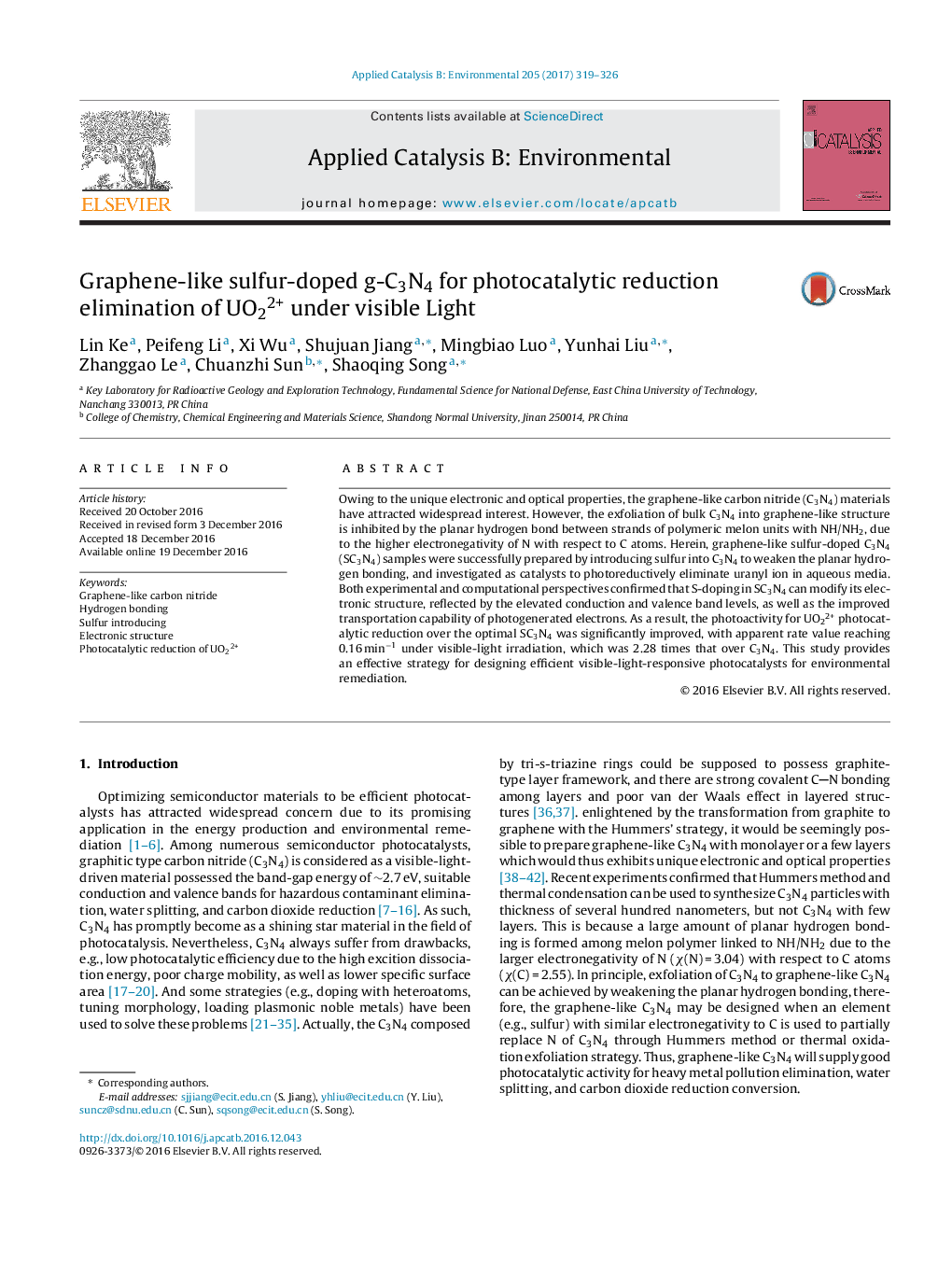| Article ID | Journal | Published Year | Pages | File Type |
|---|---|---|---|---|
| 6454338 | Applied Catalysis B: Environmental | 2017 | 8 Pages |
â¢Graphene-like SC3N4 was prepared to phtocatalytically eliminate UO22+ pollutant.â¢Weakening planar hydrogen bonding of g-C3N4 can obtain graphene-like structure.â¢Graphene-like structure modified the electronic structures of g-C3N4.â¢SC3N4 showed remarkable performance in the photocatalytic reduction of UO22+.â¢The good activity of SC3N4 was explored both experimentally and theoretically.
Owing to the unique electronic and optical properties, the graphene-like carbon nitride (C3N4) materials have attracted widespread interest. However, the exfoliation of bulk C3N4 into graphene-like structure is inhibited by the planar hydrogen bond between strands of polymeric melon units with NH/NH2, due to the higher electronegativity of N with respect to C atoms. Herein, graphene-like sulfur-doped C3N4 (SC3N4) samples were successfully prepared by introducing sulfur into C3N4 to weaken the planar hydrogen bonding, and investigated as catalysts to photoreductively eliminate uranyl ion in aqueous media. Both experimental and computational perspectives confirmed that S-doping in SC3N4 can modify its electronic structure, reflected by the elevated conduction and valence band levels, as well as the improved transportation capability of photogenerated electrons. As a result, the photoactivity for UO22+ photocatalytic reduction over the optimal SC3N4 was significantly improved, with apparent rate value reaching 0.16Â minâ1 under visible-light irradiation, which was 2.28 times that over C3N4. This study provides an effective strategy for designing efficient visible-light-responsive photocatalysts for environmental remediation.
Graphical abstractDownload high-res image (210KB)Download full-size image
